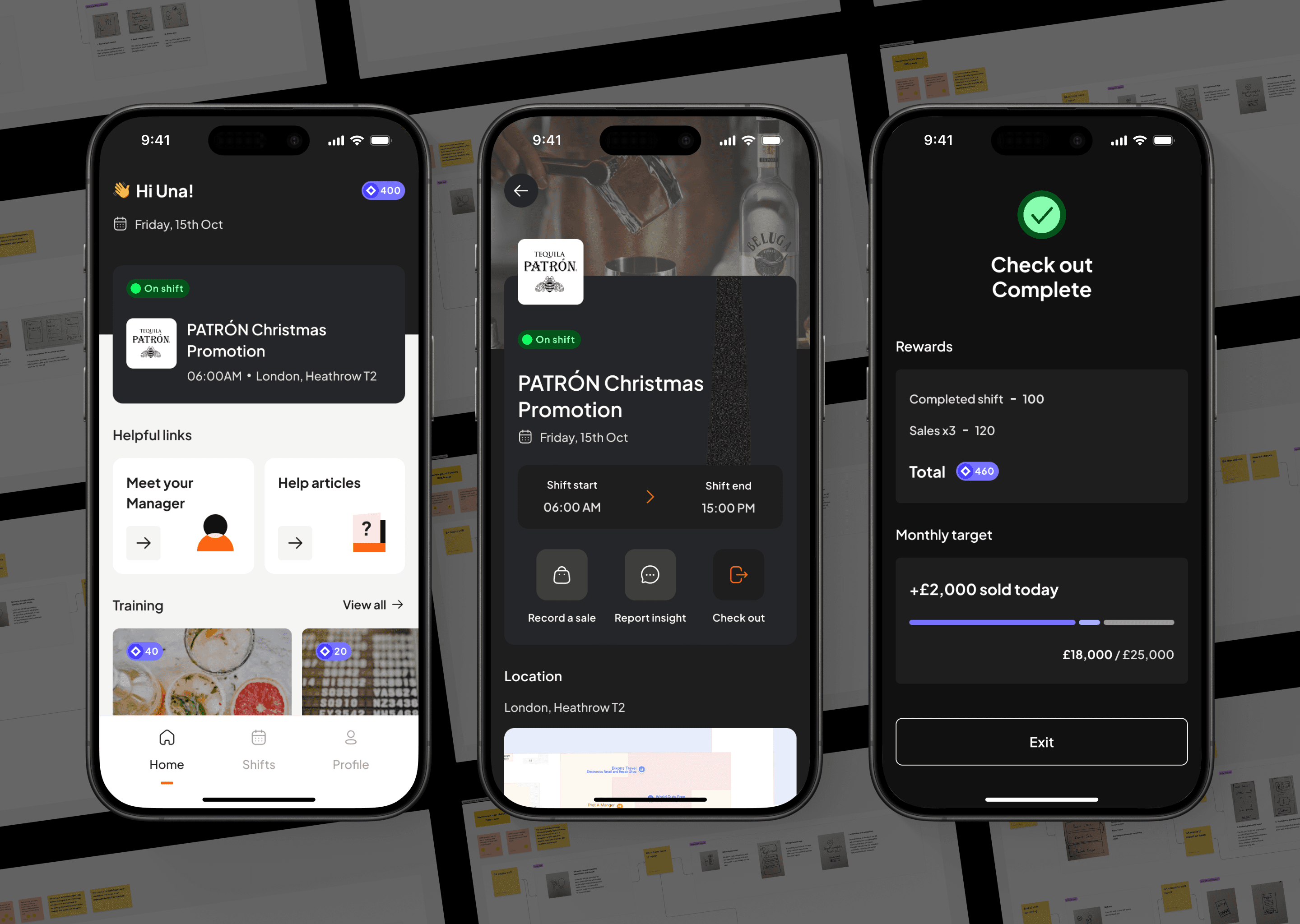Evolving strategic insight with an intensive field study
Type
Mobile app, digital transformation
Status
In production
Timeframe
December 23 - January 24
For privacy reasons, I won't go into too much detail here, but I will stress the value and importance of what activities we did during this one-week sprint. It was an incredible run of work, and one that I would love to repeat.
At a glance
My contribution
Analysed existing research repository
Worked with the team to plan activities
Produced "How might we" statements
Generated user flows from storyboard sketches
Led the planning and conducting of research activities
Worked to polish and focus prototype for testing
Analysed and added perspective to outcomes
The team
Product Manager
Product Designer
UX Designer
Blackjack is a recruitment agency for specialist team members in multiple environments. In this study our focus was on the airport retail environment.
Before the sprint, all work to date had been looking to understand the problem, primarily from a business point of view. It was clear what value could be achieved in improving efficiency with a digital product.
One major doubt so far was how the solution would work out in "the field." This was a major piece to solve, or at least get started on.
Challenges
We had a one-week sprint to determine our hypothesis and plan an appropriate field study. Conducting the study airside at a busy airport meant that logistics had priority over a clean extraction of insights. We had to think on our feet on the day and adapt to the environment and the busy schedules of our participants. Despite compromising some rigour, the gathered insights led to a steer on strategy.
Outcomes
Carrying out the study saved the product from focusing on features that were inappropriate for use in the field. Additionally, we instilled confidence in the features that would ultimately make the first release.
Preparing for pace
In the weeks running up to the sprint, there was time to revisit previous recordings of stakeholder interviews and prototype user testing. From listening to these insights, we gathered a fresh perspective on the business problem by mapping the building blocks of the vision as objects. We then explored the relationships between these to help nudge us towards what questions we should be asking during the week.
The success of the digital product was hinging on how well it would integrate into a physical environment—and so we determined that the most suitable artefact to centralise our efforts during the sprint would be storyboards. Storyboarding would let us place the assumed physical context alongside the planned digital interface.
In total, our study would focus on 5 storyboards, each defining a series of key touch-points for the user
Designing for the field
To our advantage, we already had access to user journey mapping based on our previous user research. For the sprint to be as focused as possible, we formulated hypothesis statements for each milestone in the journey. From this, we could construct storyboards and designs that would evaluate the important details.
Each prototype represented the flow designed for each storyboard
A tricky research plan
We were aware that visiting an international airport wouldn't be the most ideal place to run a controlled study. However, we were more than excited to land in an environment where hundreds of variables operate at once, working to get people to their destination.
We had to be adaptable on the day, as we didn't have any control over the time we would have with participants, or even what personas we would be able to talk to within the target user role.
With respect to time and the fact that our participants would be working their shift, we limited each session to 10–15 minutes. We focused on a different storyboard with each participant—while still taking the time to explore their day-to-day.
At the end of the day, we ended up with five separate deep dives into each storyboard and five participant profiles. This, along with our general observations of the working environment, gave us a wealth of detail about the potential compatibility of our proposed features.
Discovery deck presented to Blackjack
We found that the features that were assumed to be able to provide value could fail fast—and this was likely the most important discovery of the study.
Taking the product into the field was a game-changer for understanding where the product provided the most value and what would need to be addressed in the long term. For the product vision itself, the priority would change to focus on delivering a solution for the start and end touch-points of the users' workflow.





